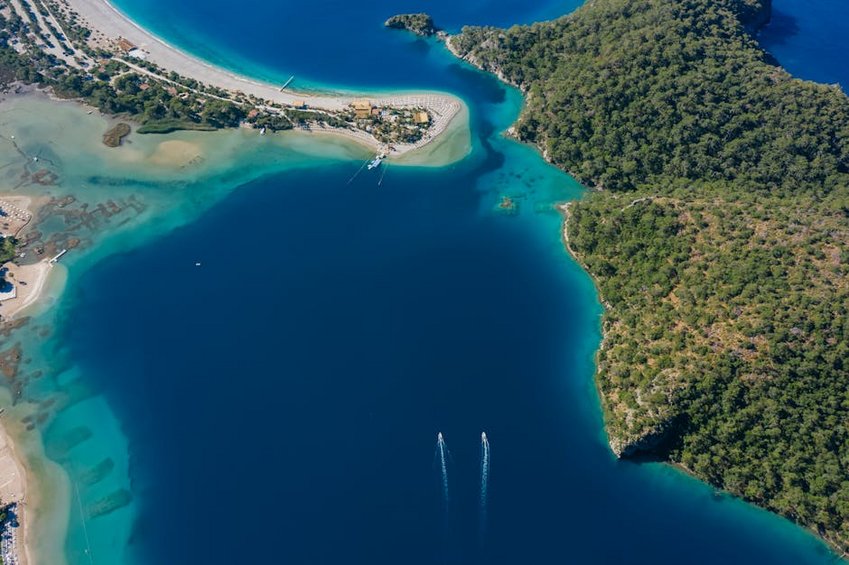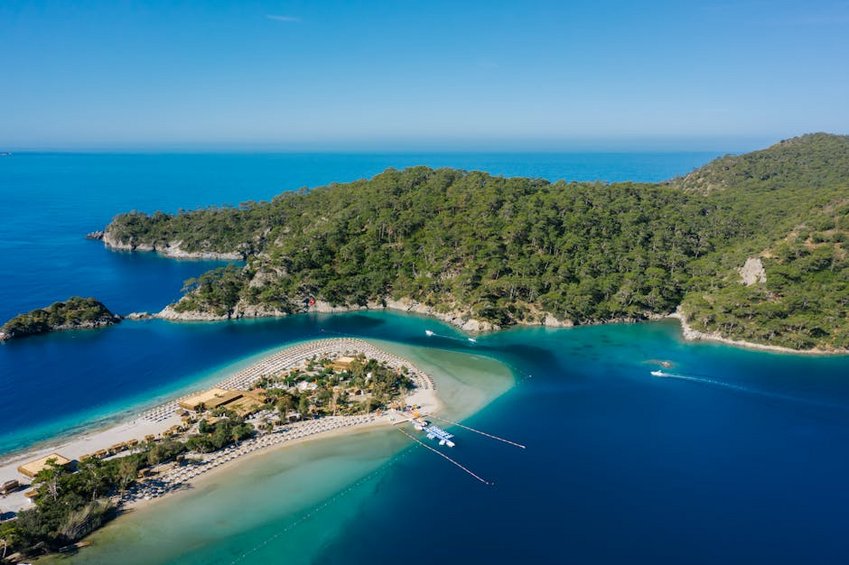Datça Peninsula – Turkey’s Unspoiled Mediterranean Paradise
Imagine a place where the Mediterranean meets the Aegean, where ancient ruins whisper stories of civilizations past, and where pristine beaches remain blissfully uncrowded. The Datça Peninsula offers exactly this magical combination, making it one of Turkey’s best-kept secrets that deserves a spot on every discerning traveler’s bucket list. This slender finger of land stretching between two seas provides an authentic Turkish experience far from the crowds of more famous resorts. You’ll discover charming fishing villages, breathtaking coastal scenery, and some of the clearest waters in the entire Mediterranean region. The Datça Peninsula experience combines natural beauty, historical significance, and genuine Turkish hospitality in a package that feels both exotic and comfortably accessible. Whether you’re seeking relaxation on sandy beaches, exploration of ancient sites, or simply a peaceful escape from modern life, this remarkable destination delivers on all fronts while maintaining an unpretentious charm that larger resorts lost years ago.
Datça Peninsula Essential Information – What Makes It Special
Located in southwestern Turkey’s Muğla Province, the Datça Peninsula extends approximately 80 kilometers (50 miles) into the sea, with the town of Datça serving as its main hub. What makes this destination truly extraordinary is its geographical position where the Mediterranean and Aegean Seas meet, creating unique microclimates and stunning marine environments. The peninsula boasts over 50 beaches and coves, each with distinct characteristics from sandy stretches to pebbled shores surrounded by pine forests. The region’s isolation has preserved its natural beauty and traditional way of life, offering visitors a glimpse into authentic Turkish coastal culture. You’ll find family-run pensions alongside luxury resorts, local fishermen mending nets in the morning, and restaurants serving catch-of-the-day seafood that would cost triple the price in more developed tourist areas.
Geographical Uniqueness – Where Two Seas Meet
- The peninsula forms a natural boundary between the Mediterranean and Aegean Seas, creating unique currents and marine life
- Its microclimate features less humidity than other Mediterranean destinations, making summer heat more comfortable
- Over 300 days of sunshine annually with temperatures rarely dropping below 10°C (50°F) even in winter months
- The narrowest point is just 800 meters wide, offering dramatic sea views from central locations
- Budget travelers can manage with $40-60 daily through hostel stays, self-catering, and public transportation
- Mid-range travelers should budget $100-150 daily for comfortable hotels, restaurant meals, and rental car expenses
- Luxury experiences range $250-400+ daily featuring boutique hotels, private boat tours, and fine dining
- Official Türkiye Tourism Portal – Datça Peninsula
- Lonely Planet Datça Travel Guide
Historical Significance – From Ancient Times to Modern Day
Datça’s history stretches back to ancient times when it was known as Knidos, an important city of the Dorian civilization. The ancient city, located at the peninsula’s tip, was renowned for its medical school, double harbors, and the famous statue of Aphrodite created by Praxiteles. Throughout history, the peninsula has been influenced by various civilizations including Persians, Romans, Byzantines, and Ottomans, each leaving their cultural imprint. The modern town of Datça maintains this historical connection while offering contemporary amenities. As you explore the region, you’ll encounter ancient ruins, traditional stone houses, and museums preserving artifacts that tell the story of this strategically important location that has attracted settlers and traders for millennia.

Datça Peninsula Planning Your Trip – Seasons, Budget, Preparation
Planning your Datça Peninsula adventure requires consideration of seasonal variations, budget allocation, and necessary preparations to maximize your experience. The peninsula’s tourism infrastructure has developed thoughtfully, offering options ranging from backpacker hostels to luxury resorts, though it maintains a more authentic character than mass tourism destinations. You’ll want to decide whether to focus on beach relaxation, historical exploration, hiking adventures, or a combination of all these experiences. The region’s relatively remote location means advance planning pays dividends, particularly for transportation and accommodation during peak seasons. Fortunately, the peninsula’s compact size means you can base yourself in one location and easily explore different areas, though moving between villages can provide varied perspectives on this diverse destination.
Best Time to Visit Datça Peninsula
The ideal time to visit Datça Peninsula depends largely on your preferences and tolerance for heat. May through June and September through October offer the perfect balance of warm weather (22-28°C/72-82°F) and manageable crowds, with sea temperatures comfortable for swimming. July and August bring the hottest weather (often exceeding 35°C/95°F) and the largest crowds, though still modest compared to other Turkish resorts. These summer months feature vibrant night markets and full operation of all tourist facilities. Spring (April-May) showcases spectacular wildflower displays across the peninsula’s hillsides, while autumn (October-November) offers the warmest sea temperatures and harvest festivals. Even winter months remain pleasant for hiking and cultural exploration, with many restaurants and hotels remaining open year-round.
Budget Planning and Costs
Essential Preparation Checklist
Preparing for your Datça Peninsula adventure requires some specific considerations beyond typical vacation planning. Ensure your passport has at least six months validity if requiring a Turkish visa (e-visa available online for many nationalities). Pack comfortable walking shoes for exploring archaeological sites and hiking trails, plus swimwear for multiple beach visits daily. While credit cards are accepted in larger establishments, carry Turkish Lira for smaller villages and markets. Download offline maps since mobile coverage can be spotty in remote coves. If visiting between June and September, book accommodations and rental cars several months in advance, particularly for popular villages like Knidos and Palamutbükü. Don’t forget European-style power adapters, sunscreen, and a hat for protection against the strong Mediterranean sun.
Datça Peninsula Top Attractions and Activities – Must-See Experiences
The Datça Peninsula offers an incredible diversity of attractions that will fill your itinerary with memorable experiences. From world-class archaeological sites to hidden swimming coves, from traditional villages to luxury marinas, the region provides something for every type of traveler. History enthusiasts will marvel at ancient ruins that rival more famous sites without the crowds, while nature lovers can explore protected bays and hiking trails through fragrant pine forests. The peninsula’s culinary scene showcases exceptional seafood and local products that foodies will appreciate, and water sports enthusiasts will find excellent conditions for sailing, diving, and kayaking. What makes Datça particularly special is how these diverse experiences exist within close proximity, allowing you to combine cultural, natural, and recreational activities in a single day without feeling rushed.
Must-See Historical and Natural Highlights
No visit to Datça Peninsula is complete without exploring the ancient city of Knidos at the peninsula’s western tip. This spectacular archaeological site features well-preserved theaters, temples, and the famous circular temple of Aphrodite overlooking two natural harbors. The site’s remote location enhances its mystical atmosphere, especially during sunset when the stone ruins glow golden. Equally impressive are the peninsula’s natural attractions, particularly the numerous beaches and coves accessible by land or sea. Palamutbükü Beach stands out with its kilometer-long stretch of sand and crystal-clear waters, while Hayıtbükü Cove offers a more intimate setting surrounded by olive groves. Don’t miss the Datça Peninsula’s inland villages like Mesudiye and Reşadiye, where traditional stone houses and local crafts provide insight into authentic Turkish rural life.
Hidden Gems and Local Favorites
Beyond the main attractions, Datça Peninsula hides numerous treasures known mainly to locals and repeat visitors. The village of Eski Datça (Old Datça) charms visitors with its narrow cobblestone streets, restored stone houses, and traditional cafes where elderly residents play backgammon. For a unique swimming experience, seek out Ovabükü Cove, accessible via a scenic hiking trail through pine forests, featuring incredibly clear waters perfect for snorkeling. The weekly market in Datça town (Saturdays) offers an authentic local experience where farmers sell fresh produce, spices, and handmade crafts. For panoramic views, drive to the highest point of the peninsula near Emecik village, where on clear days you can see both the Mediterranean and Aegean Seas simultaneously. These lesser-known spots provide the most authentic experiences of Datça’s laid-back lifestyle and natural beauty.
Datça Peninsula Practical Travel Information – Transportation and Accommodation
Navigating the Datça Peninsula requires some planning due to its elongated shape and limited public transportation options. The region has embraced tourism while maintaining its authentic character, resulting in accommodation options that range from basic guesthouses to luxury boutique hotels, though large chain resorts are notably absent. Transportation primarily revolves around rental cars, scooters, or local dolmuş (shared minibuses) that connect main villages. The peninsula’s infrastructure has improved significantly in recent years, with well-maintained roads reaching most beaches and villages, though some remote coves remain accessible only by boat or hiking trails. You’ll find adequate medical facilities in Datça town, ATMs in larger villages, and reliable internet connectivity in most accommodations, though some remote areas may have limited service.
| Accommodation Type | Features and Locations | Price Range (USD per night) |
|---|---|---|
| Budget Guesthouses | Family-run pensions in Datça town and smaller villages, basic amenities | $25-50 |
| Mid-Range Hotels | Comfortable hotels with pools, mainly in Datça town and Palamutbükü | $80-150 |
| Boutique Properties | Restored stone houses in Eski Datça, sea-view properties | $150-300 |
| Luxury Resorts | Beachfront properties with spas, private beaches, fine dining | $250-500+ |


